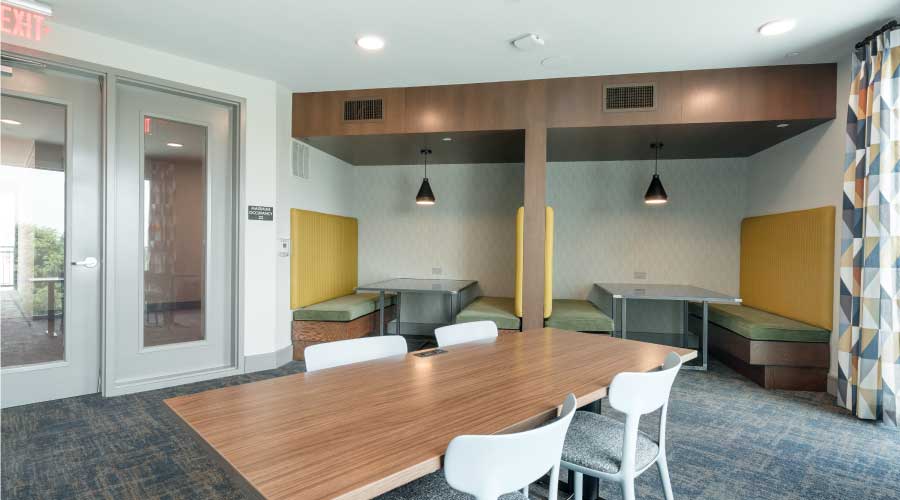Protecting Your Workplace: 6 Essential Steps for Safety
Regular updates of emergency action plans required to help prevent mass shootings.
By Amy Wunderlin, Contributing Writer
It will never happen to me. That only happens in low-income neighborhoods. We are safe here. These are just a handful of the excuses security experts hear when discussing shootings in the workplace. The truth is, however, that a mass shooting or other violent event can happen anywhere and to anyone.
The United States has already experienced more than 200 mass shootings in 2023, a disturbing trend that doesn’t seem to be easing anytime soon. While news of shootings in educational settings often has the biggest effect on the public, mass shootings are also happening regularly in other public facilities such as places of worship, supermarkets, and movie theaters.
With shootings happening seemingly daily, building owners and facility managers can no longer ignore these tragic events. It is their responsibility to keep everyone inside their facilities safe. This starts with creating and regularly updating an emergency action plan.
Creating a plan
An emergency action plan is a written plan that addresses all emergencies an employer may reasonably expect in the workplace. Often under the management of the facility manager, the plan includes emergencies such as fires, tornadoes, floods — and now mass shootings.
Under federal law, every workplace — no matter the size — is required to have an Occupational Safety and Health Administration (OSHA) compliant emergency action plan, says Bo Mitchell, president and CEO of 911Consulting.
Beyond the obvious call for safety, creating an emergency action plan provides assurance against costly litigation in the event that something did go wrong. The problem, Mitchell says, is that almost no one has a plan in place that meets OSHA’s guidelines — and even fewer plans account for mass shootings.
“Everybody thinks, ‘Well, if I have a fire plan, that must be just what I need,’” Mitchell says. “Well, no, there are standards and regulations that say it has to be all hazards … and it’s not just about active shooters. It’s about tornadoes, pipe bursts, people with guns, drugs, suicide, all the emergencies that have occurred and occur every day in workplaces all over the United States …That means you plan for everything.”
Start with a risk assessment
So, what can facility managers do? According to Randy Atlas, president and owner of Atlas Safety & Security Design, establishing your emergency action plan should start first by questioning, “What is the reasonable standard of care?”
To answer that question, managers must determine what the standards of care or best practices are for their building or industry. Often, this starts with a risk assessment done by a trained security professional.
A risk assessment establishes procedures by asking the who, what, why, when, where and how of it all. They help identify things like:
- Who's supposed to be there?
- When are they supposed to be there?
- What are they doing?
- Where are the secure areas?
- Where are you assuming risk?
By identifying procedures or standards of care, managers can better understand what is reasonable and what is affordable to implement in terms of security. There is not a one-size-fits-all when it comes to emergency action plans, so taking the time to assess the risks sets the bar for what should be done regardless of location, size, or industry.
Once risk factors are established, there are a number of areas to consider to further protect buildings from violence. While working with a security professional to establish the best path forward is recommended, here are six tips to get started.
1. Evaluate your access control.
According to Atlas, when it comes to preventing an active shooter situation, it is all about access control.
“How do you stop people who have a way to get in when they don't belong? It is really the bottom-line question,” he says.
For government buildings and schools, embassy-level security has now become the norm. Where children once were able to come and go throughout the day as they wished, schools are now locked down from when school starts to when the last bell rings in the afternoon.
The question now has become what is considered reasonable for a shopping center or office building in terms of security. Weapons screening, profiling or maintaining a single point of entry is not very practical, and while the threat of a mass shooting occurring in these spaces is very real, how reasonable is it to design every single building with embassy-level security with a secure perimeter and a secure building exterior?
According to Michael Gips, security expert and principal at GIobal Insights in Professional Security, for small- to mid-sized facilities, maintaining access control with credentials is a good middle ground.
“If you're in a smallish office you only give people access to areas where they need to go,” he says.
For example, if a building has three floors, each floor could be segmented into two or three different areas and each person only has access to a few of these areas. Using key cards, employees are only allowed to go into specific places at specific times.
Keeping those key cards and credentials up to date for current employees is also key.
“One of the biggest flaws, and you see this all the time, is that someone will have worked somewhere, they'll be terminated, or they've left and on bad terms, and their credentials were never deactivated,” Gips says.
He also suggests implementing a security system that can converge physical and cyber access. This means that with a click of one button access can be shut off. This is especially helpful in cases when the manager forgot to collect key cards, or the person stopped showing up to work.
2. Consider your territorial boundaries.
In most cases controlling how people access a building is a crucial point for safety, but it can be challenging. That’s where territoriality comes into play. Territoriality considers things like the fencing around the school or the landscaping — anything that is defending the legal boundaries of a facility.
“There's an opportunity there to have perimeter fencing that then focuses people to the designated entry point for that property," Atlas says. “That's where you might have cameras, that's where you may have a security guard, that may be where you have access control like a turnstile gate.”
From there a person either won’t be let in, or they may be required to buzz an intercom and explain why they are there. This helps to create a clearly defined point of entrance and a clearly defined point of exit, where the person is directed to some layer of security, whether that be human resources, the school resource office or to lobby security.
3. Have an evacuation plan.
Moving beyond prevention, it is also important to have plans in place if a violent event does occur. Gips says having an evacuation plan is essential in response to or preparation of workplace violence. This plan should map out specific routes depending on where someone might be in the building.
Gips adds that an evacuation plan should also take into consideration when it is safe to move or when to shelter in place and where people should go. This is especially important in a school, house of worship, or any facility with children or people with mobility challenges.
Other considerations with sheltering in place include:
- How will you lock the doors?
- Do you have the appropriate supplies?
- How will you communicate?
- Knowing the difference between cover and concealment.
4. Implement a mass communication system.
Being able to quickly and effectively communicate is important during every emergency, not just mass shootings.
Gips recommends implementing some type of mass notification system that can alert anyone inside the building silently without having to talk. This could be something like an SMS text message that alerts everyone to the danger and gives brief directives.
“That information can also go to the police and is valuable intelligence for them to track an active shooter,” Gips says.
5. Train employees for early risk detection.
On the path to workplace violence, there are often areas where intervention is possible, especially in the case of internal shooting.
It’s important to note that when talking about active shooter events, there are two different types of scenarios that require different types of planning. In an external event, the shooter is a random person versus an internal event could be an employee, ex-employee or specific person with a grievance against the business.
“Depending on the type of person, is it internal or are they just a member of the public, some different considerations apply,” Gips says. “For example, if you're talking about workplace violence, the most effective thing by far you can do is training people who work with them to look for signs of impending violence.”
Employees should be trained on how to critically observe people, looking for significant changes in behavior, such as someone who is usually mild-mannered suddenly becoming easily angered or aggressive.
Beyond training, it is also key to follow up training with an effective way to report problems.
“You definitely have to follow up and not just have empty gestures. By far, the most important thing is to train in early detection and then have effective reporting,” says Gips. “You want them to create a mechanism that makes them feel comfortable to report it.”
This could be in the form of an anonymous tip line or a manager simply setting a tone of understanding that what is reported is done so in confidence.
From there, managers would intervene and assess the situation. They should also be trained to determine if their employee’s concern is valid and then proceed with the correct course of action. Depending on the plan and the threat level, HR, legal or security may be required to get involved.
6. Conduct drills and walk-throughs.
As part of employee training, all facilities should also be conducting drills and walkthroughs on what specifically they should do during a shooting.
There are many resources available to help with drills, including local law enforcement, online videos, and other paid programs. One promising training technique uses augmented reality through a smartphone. The program acts like a video game where the user sees a shooter running through the facility and has to make decisions on what to do in different scenarios.
These types of interactive training programs are typically the most effective because they keep people engaged and interested, says Gips, who also adds that training should be conducted on a regular schedule and well documented to ensure everyone is up to date on the emergency plan.
As mass shootings continue to occur at an alarming pace, many people feel powerless against the violence. While so much of it is out of the public’s control, the good news is that managers still maintain control of their physical environment, and that can be a powerful tool with the right plan in place.
“We can control where we put fencing. We can control where we have entrances and exits. We can control where we put cameras. We can control where we put a security guard. We can control how you come into the classroom or the bank building,” says Atlas, concluding that ultimately, it is up to facility owners and managers to take the appropriate actions that make getting into their property, building or asset more difficult and ensure the safety of everyone inside.
Amy Wunderlin is a freelance writer based in Fort Atkinson, Wisconsin.
Related Topics:












